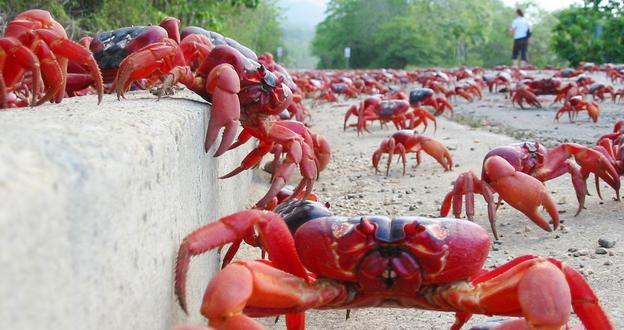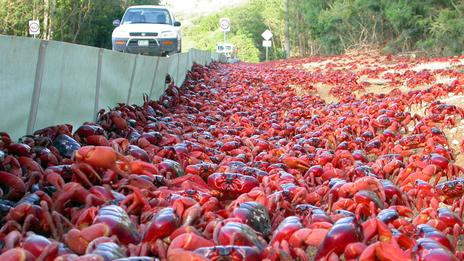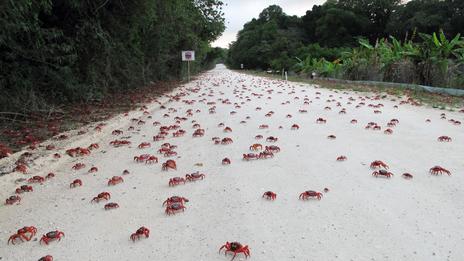|
Every year in
late spring,
The migration starts with the first
heavy rains in October, November or December. At that point, there’s enough
moisture in the air for the large crustaceans, which can reach up to 11cm
across, to make the arduous, five-day journey from their homes in wet inland
forests to the
With so many of the creatures on the
move, Parks Australia works before and during the migration to protect the
crustaceans by closing roads, building fences and constructing underground
tunnels. Drivers are encouraged to stop for the crabs.
Upon reaching the sand, the male crabs
dig burrows and fight each other for ownership of the shelters. When the
female crabs arrive (usually five to seven days after the first males), they
begin to mate, and the females stay in their beachside burrows until the last
quarter of the lunar cycle. The females always wait for the first day of the
last quarter – regardless of when they started the migration – to spawn and
release their eggs into the sea. Researchers speculate that since this phase
of the moon has the least sea level change between high and low tides, the
eggs have higher chances of survival.
This year, the possible spawning dates
(and dates of the quarter moon) are 28 November or 28 December, so the
initial migration will happen seven to 18 days before, depending on the
weather. The crabs tend to be on the move in the morning and early evening
when the air is cooler, but any dry spells will halt the migration until
wetter weather prevails.
Follow the Parks Australia blog or the
Christmas Island Tourism Facebook page to get an alert at the first signs of
the cruising crustaceans.
Source: BBC
|
Thứ Bảy, 28 tháng 12, 2013
Đăng ký:
Đăng Nhận xét (Atom)




Không có nhận xét nào:
Đăng nhận xét